Grow Strawberries at Home? Absolutely! Imagine stepping outside your door and plucking a sun-ripened, juicy strawberry, bursting with flavor far superior to anything you’d find in a store. That’s the magic of home gardening, and it’s easier than you might think! For centuries, cultivating our own food has been a deeply ingrained practice, connecting us to the earth and providing sustenance. From ancient Roman gardens to the victory gardens of World War II, growing your own produce has always been a symbol of self-sufficiency and a source of immense satisfaction.
But let’s be honest, life gets busy. We’re often short on time and space, which can make the idea of a sprawling garden seem daunting. That’s where these DIY tricks and hacks come in! I’m here to show you that you don’t need acres of land or a green thumb to grow strawberries at home successfully. Whether you have a sprawling backyard or just a sunny balcony, I’ll share simple, effective methods to cultivate these delicious berries.
Why strawberries, you ask? Well, besides being incredibly tasty, they’re packed with vitamins and antioxidants. Plus, store-bought strawberries are often treated with pesticides, making homegrown options a healthier choice. So, are you ready to ditch the grocery store berries and embark on a rewarding gardening adventure? Let’s get started!
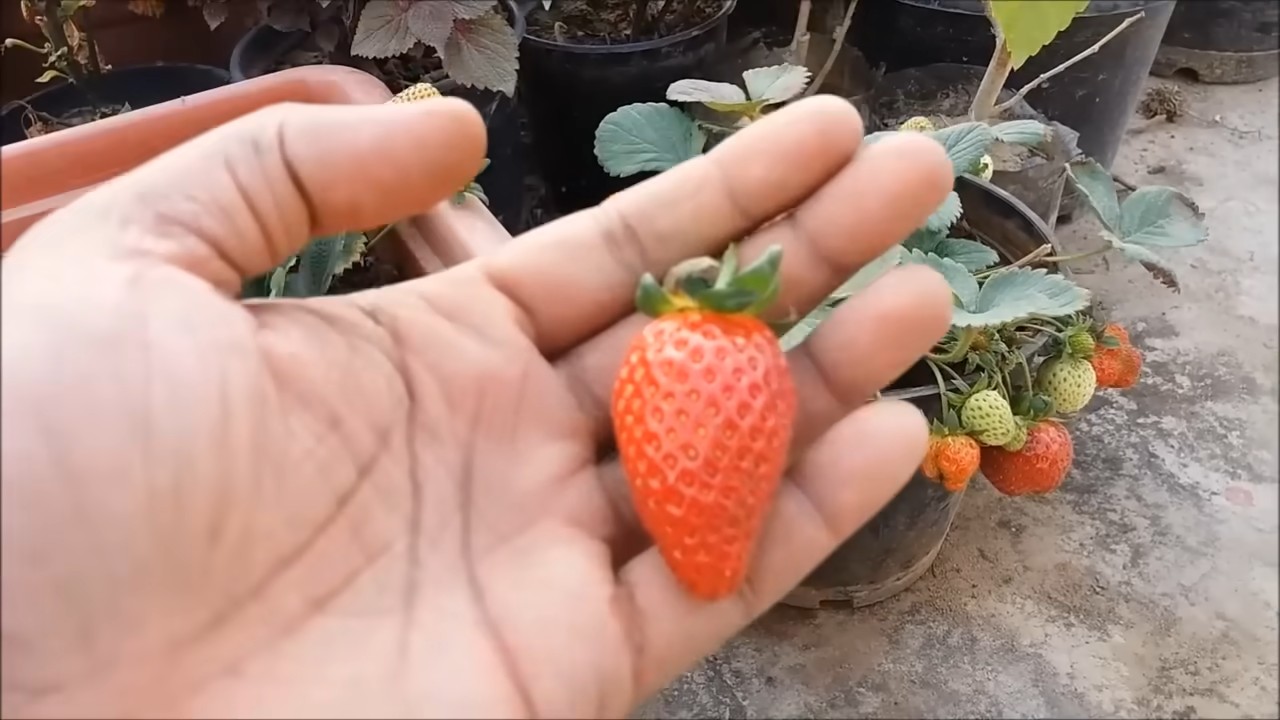
Grow Your Own Delicious Strawberries: A DIY Guide
Okay, strawberry lovers, listen up! I’m going to walk you through everything you need to know to grow your own juicy, red strawberries right at home. Forget those bland, store-bought berries – we’re talking about sun-ripened sweetness bursting with flavor. Whether you have a sprawling garden or just a sunny balcony, you can absolutely do this. Let’s get started!
Choosing Your Strawberry Variety
First things first, you need to decide what kind of strawberries you want to grow. There are three main types, and each has its own perks:
* **June-Bearing:** These are your classic, one-big-harvest-a-year strawberries. They produce a large crop, usually in late spring or early summer (hence the name). If you want to make a big batch of jam or freeze a bunch for later, these are a great choice.
* **Everbearing:** Don’t let the name fool you – they don’t produce berries *constantly*. Instead, they give you two or three harvests throughout the growing season: one in spring, one in late summer, and sometimes another smaller one in the fall.
* **Day-Neutral:** These are the most consistent producers. They’ll give you a steady supply of strawberries throughout the spring, summer, and fall, as long as the temperature stays between 35°F and 85°F.
I personally love day-neutral varieties because I like having fresh strawberries available for as long as possible. But honestly, you can’t go wrong with any of them!
Preparing Your Strawberry Patch (or Container!)
Now that you’ve chosen your variety, it’s time to get your growing space ready. Strawberries need plenty of sunshine and well-drained soil.
* **Sunlight:** Aim for at least 6-8 hours of direct sunlight per day. The more sun, the sweeter the berries!
* **Soil:** Strawberries prefer slightly acidic soil with a pH between 5.5 and 6.8. You can test your soil with a kit from your local garden center. If your soil is too alkaline, you can amend it with sulfur or peat moss.
* **Drainage:** This is crucial! Strawberries hate having wet feet. Make sure your soil drains well. If you’re planting in the ground, consider raised beds to improve drainage. If you’re using containers, make sure they have drainage holes.
Planting Your Strawberries: Step-by-Step
Alright, let’s get those strawberry plants in the ground (or container)!
1. **Prepare the Soil:** Whether you’re using a garden bed or a container, loosen the soil and mix in some compost or other organic matter. This will provide nutrients and improve drainage. I like to add a slow-release fertilizer at this stage too.
2. **Dig the Holes:** Space your strawberry plants about 12-18 inches apart in rows that are 2-3 feet apart. Dig holes that are large enough to accommodate the root ball of your plants.
3. **Plant the Strawberries:** Gently remove the strawberry plants from their containers and loosen the roots a bit. Place the plants in the holes, making sure the crown (the point where the roots meet the stem) is level with the soil surface. Don’t bury the crown, or the plant might rot.
4. **Backfill and Water:** Fill the holes with soil and gently firm it around the plants. Water thoroughly to settle the soil.
5. **Mulch:** Apply a layer of mulch around the strawberry plants. This will help retain moisture, suppress weeds, and keep the berries clean. Straw, pine needles, or wood chips are all good options. I personally prefer straw because it’s readily available and breaks down nicely over time.
Caring for Your Strawberry Plants
Once your strawberries are planted, it’s important to give them the care they need to thrive.
* **Watering:** Water your strawberry plants regularly, especially during dry spells. Aim to keep the soil consistently moist, but not soggy. Water deeply, rather than frequently, to encourage strong root growth.
* **Fertilizing:** Feed your strawberry plants with a balanced fertilizer every few weeks during the growing season. Follow the instructions on the fertilizer package. I like to use a fertilizer that’s specifically formulated for berries.
* **Weeding:** Keep your strawberry patch free of weeds. Weeds compete with your strawberry plants for nutrients and water. Hand-pull weeds regularly, or use a hoe to cultivate the soil.
* **Pest and Disease Control:** Keep an eye out for pests and diseases. Common strawberry pests include slugs, snails, and aphids. Common diseases include powdery mildew and gray mold. If you spot any problems, take action quickly. There are many organic pest and disease control options available. I usually start with insecticidal soap for aphids and diatomaceous earth for slugs and snails.
* **Remove Runners (for June-Bearing Varieties):** June-bearing strawberries produce runners, which are long stems that grow out from the main plant and develop new plantlets at the end. If you want to maximize your berry production, remove these runners as they appear. This will force the plant to put its energy into producing fruit, rather than new plants. For everbearing and day-neutral varieties, you can let some runners grow if you want to propagate new plants.
* **Protect from Birds:** Birds love strawberries just as much as we do! If you’re having trouble with birds eating your berries, you can cover your plants with netting.
Harvesting Your Strawberries
The moment you’ve been waiting for! Harvesting your own, home-grown strawberries is one of the most rewarding experiences.
1. **Wait for Ripeness:** Strawberries are ripe when they are fully red and slightly soft to the touch. They should also detach easily from the plant.
2. **Harvest Carefully:** Gently grasp the strawberry and twist it off the plant, leaving a small piece of the stem attached.
3. **Harvest Regularly:** Harvest your strawberries every few days, as they ripen. This will encourage the plants to produce more berries.
4. **Enjoy!** Eat your strawberries fresh, or use them in your favorite recipes. They’re delicious in pies, jams, smoothies, and salads.
Growing Strawberries in Containers
Don’t have a garden? No problem! You can easily grow strawberries in containers.
* **Choose the Right Container:** Select a container that is at least 12 inches in diameter and 8 inches deep. Make sure it has drainage holes.
* **Use a Good Potting Mix:** Don’t use garden soil in containers. It’s too heavy and doesn’t drain well. Use a high-quality potting mix that is specifically formulated for containers.
* **Planting:** Follow the same planting instructions as for planting in the ground.
* **Watering:** Container-grown strawberries tend to dry out more quickly than those grown in the ground. Water them regularly, especially during hot weather.
* **Fertilizing:** Fertilize your container-grown strawberries every few weeks with a balanced fertilizer.
* **Overwintering:** In cold climates, you’ll need to protect your container-grown strawberries from freezing temperatures. You can move them to a sheltered location, such as a garage or shed, or you can wrap the containers with burlap or bubble wrap.
Propagating Strawberries
Want to expand your strawberry patch without buying new plants? You can easily propagate strawberries from runners.
1. **Choose a Runner:** Select a healthy runner with a well-developed plantlet at the end.
2. **Root the Plantlet:** Place the plantlet in a small pot filled with potting mix. You can secure it to the soil with a paperclip or a small rock.
3. **Water Regularly:** Keep the potting mix moist.
4. **Sever the Runner:** Once the plantlet has developed roots, you can sever the runner from the mother plant.
5. **Transplant:** Transplant the new strawberry plant to its permanent location in the garden or in a container.
Troubleshooting
Even with the best care, you might encounter some problems when growing strawberries. Here are a few common issues and how to deal with them:
* **Small Berries:** This can be caused by a lack of sunlight, water, or nutrients. Make sure your plants are getting enough of all three.
* **Rotting Berries:** This is usually caused by too much moisture. Make sure your soil drains well and avoid overwatering.
* **Pests:** As mentioned earlier, keep an eye out for pests and take action quickly if you spot any problems.
* **Diseases:** Similarly, watch for diseases and treat them promptly.
Enjoying Your Homegrown Strawberries
Growing your own strawberries is a rewarding experience that will provide you with delicious, fresh fruit all season long. With a little bit of care and attention, you can enjoy a bountiful harvest of sweet, juicy strawberries. I hope this guide has been helpful! Happy gardening!
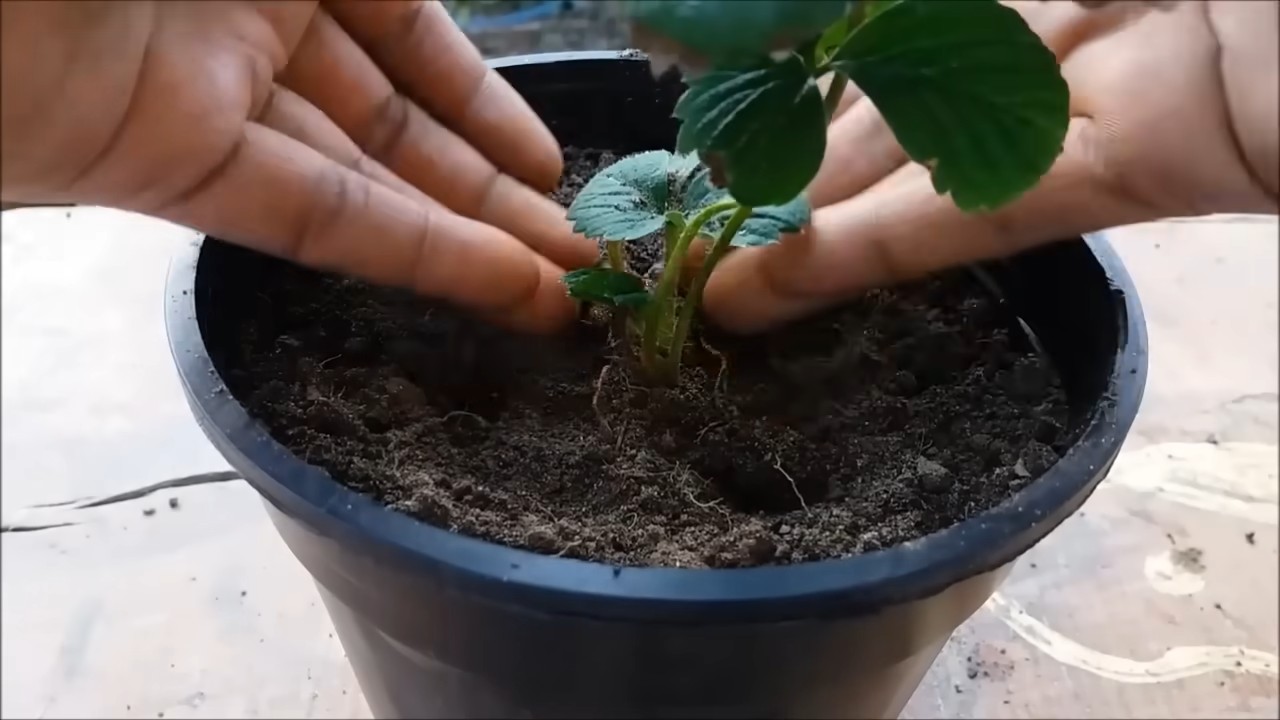
Conclusion
So, there you have it! Growing strawberries at home, especially using this simple DIY trick, is more than just a gardening project; it’s an investment in fresh, flavorful, and readily available fruit. Forget those bland, store-bought berries that have traveled miles and lost their vibrancy. Imagine stepping into your backyard or onto your balcony and plucking a sun-ripened, juicy strawberry, bursting with sweetness. That’s the promise of this method, and it’s a promise easily kept.
This DIY approach to growing strawberries offers several compelling advantages. First and foremost, it’s incredibly space-efficient. Whether you have a sprawling garden or a tiny apartment balcony, you can adapt this technique to fit your needs. Vertical planters, hanging baskets, or even repurposed containers can become thriving strawberry havens. Secondly, it’s cost-effective. Starting with a few strawberry plants and utilizing readily available materials means you’ll be enjoying a bountiful harvest without breaking the bank. And finally, it’s incredibly rewarding. There’s a unique satisfaction that comes from nurturing a plant from seedling to fruit, knowing you’ve played a direct role in bringing that deliciousness to your table.
But the beauty of this DIY strawberry growing method lies in its adaptability. Feel free to experiment with different varieties of strawberries to find your favorites. Everbearing varieties will provide a continuous harvest throughout the growing season, while June-bearing varieties offer a larger, concentrated crop. Consider companion planting to enhance growth and deter pests. Marigolds, basil, and thyme are excellent choices to plant alongside your strawberries. You can also tailor the soil mix to your specific climate and growing conditions. Adding compost or other organic matter will improve drainage and provide essential nutrients.
Don’t be afraid to get creative with your containers. Old tires, wooden pallets, or even plastic bottles can be transformed into unique and functional strawberry planters. Just ensure that your chosen container has adequate drainage to prevent waterlogging. And remember, consistent watering and fertilization are key to a successful harvest. Keep an eye on your plants and adjust your watering schedule based on the weather conditions. A balanced fertilizer formulated for strawberries will provide the necessary nutrients for optimal growth and fruit production.
This DIY strawberry growing trick is a game-changer for anyone who loves fresh, flavorful berries. It’s easy, affordable, and incredibly rewarding. So, what are you waiting for? Gather your supplies, choose your strawberry plants, and get ready to embark on a delicious gardening adventure. We’re confident that you’ll be amazed by the results.
We encourage you to try this DIY trick and share your experience with us! Post photos of your strawberry plants, share your tips and tricks, and let us know how this method has worked for you. Together, we can create a community of strawberry enthusiasts, sharing our knowledge and inspiring others to grow their own delicious berries at home. Happy growing!
Frequently Asked Questions (FAQ)
What is the best type of strawberry to grow at home?
The “best” type of strawberry depends on your climate, growing space, and personal preferences. However, some popular and reliable varieties for home growing include:
* **Everbearing Strawberries:** These varieties produce fruit throughout the growing season, offering a continuous harvest. Popular everbearing varieties include Albion, Seascape, and Ozark Beauty. They are great for beginners as they are generally more forgiving.
* **June-Bearing Strawberries:** These varieties produce a large crop of strawberries in a short period, typically in June. They are known for their exceptional flavor and are ideal for making jams and preserves. Popular June-bearing varieties include Chandler, Earliglow, and Honeoye.
* **Day-Neutral Strawberries:** Similar to everbearing, these produce fruit throughout the growing season, but are less sensitive to day length. They are a good option for areas with shorter growing seasons.
* **Alpine Strawberries:** These are small, intensely flavored strawberries that are easy to grow and produce fruit throughout the summer. They are a great choice for containers and hanging baskets.
Consider your local climate and growing conditions when selecting your strawberry plants. Consult with your local nursery or garden center for recommendations on the best varieties for your area.
How much sunlight do strawberries need?
Strawberries need at least 6-8 hours of direct sunlight per day to thrive. Sunlight is essential for photosynthesis, which is the process by which plants convert light energy into chemical energy for growth and fruit production. Without enough sunlight, your strawberry plants will produce fewer and smaller berries.
If you are growing strawberries indoors, you may need to supplement natural sunlight with grow lights. Position the grow lights close to the plants and ensure they provide a full spectrum of light.
What kind of soil is best for growing strawberries?
Strawberries prefer well-drained, slightly acidic soil with a pH between 5.5 and 6.5. The soil should be rich in organic matter to provide essential nutrients and improve drainage.
You can amend your soil with compost, aged manure, or peat moss to improve its fertility and drainage. Avoid using heavy clay soils, as they can retain too much water and lead to root rot. If you have clay soil, consider growing your strawberries in raised beds or containers.
How often should I water my strawberry plants?
Water your strawberry plants regularly, especially during dry periods. The soil should be consistently moist but not waterlogged. Water deeply and thoroughly, allowing the water to penetrate the root zone.
The frequency of watering will depend on the weather conditions, soil type, and the size of your plants. Check the soil moisture regularly and water when the top inch of soil feels dry to the touch. Avoid overhead watering, as it can promote fungal diseases. Instead, water at the base of the plants or use a soaker hose.
How do I fertilize my strawberry plants?
Fertilize your strawberry plants regularly to provide them with the nutrients they need for optimal growth and fruit production. Use a balanced fertilizer formulated for strawberries, following the instructions on the package.
Apply fertilizer in the spring, before the plants begin to flower, and again after the harvest. Avoid over-fertilizing, as it can lead to excessive vegetative growth and reduced fruit production. Organic fertilizers, such as compost tea or fish emulsion, are also excellent choices for feeding your strawberry plants.
How do I protect my strawberries from pests and diseases?
Strawberries are susceptible to a variety of pests and diseases, including aphids, spider mites, slugs, snails, and fungal diseases. To protect your plants, take the following precautions:
* **Inspect your plants regularly** for signs of pests or diseases.
* **Remove any infected leaves or fruit** immediately.
* **Use organic pest control methods**, such as insecticidal soap or neem oil, to control aphids and spider mites.
* **Handpick slugs and snails** or use slug bait.
* **Provide good air circulation** to prevent fungal diseases.
* **Water at the base of the plants** to avoid wetting the foliage.
* **Mulch around the plants** to suppress weeds and retain moisture.
* **Consider using row covers** to protect your plants from pests and birds.
How do I overwinter my strawberry plants?
In colder climates, strawberry plants need protection from freezing temperatures during the winter. Here are some tips for overwintering your strawberry plants:
* **Mulch around the plants** with straw, leaves, or pine needles to insulate the roots.
* **Cover the plants with a row cover** or burlap to protect them from wind and snow.
* **Water the plants thoroughly** before the ground freezes.
* **If growing in containers, move the containers to a sheltered location**, such as a garage or shed.
* **In very cold climates, you may need to dig up the plants and store them in a cool, dark place** until spring.
With proper care, your strawberry plants will survive the winter and produce a bountiful harvest the following year. Remember, growing strawberries at home is a rewarding experience, and with this DIY trick, you’re well on your way to enjoying fresh, delicious berries all season long!

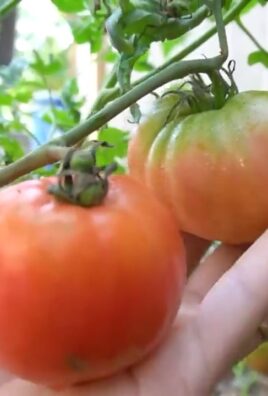
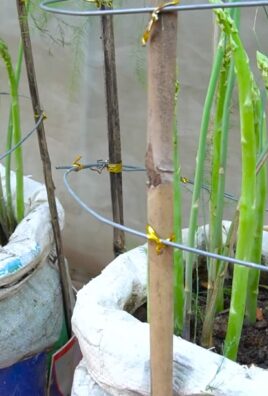
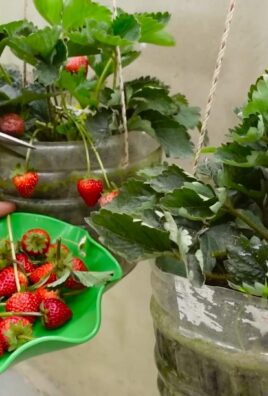
Leave a Comment